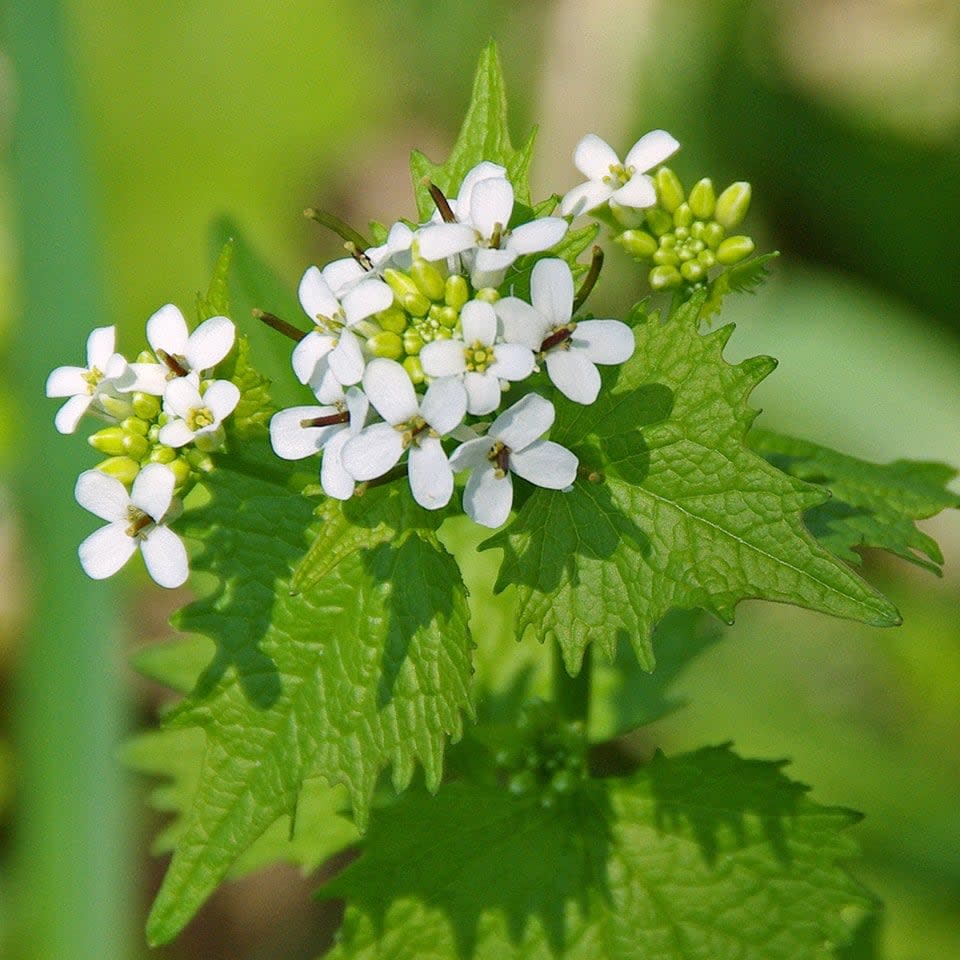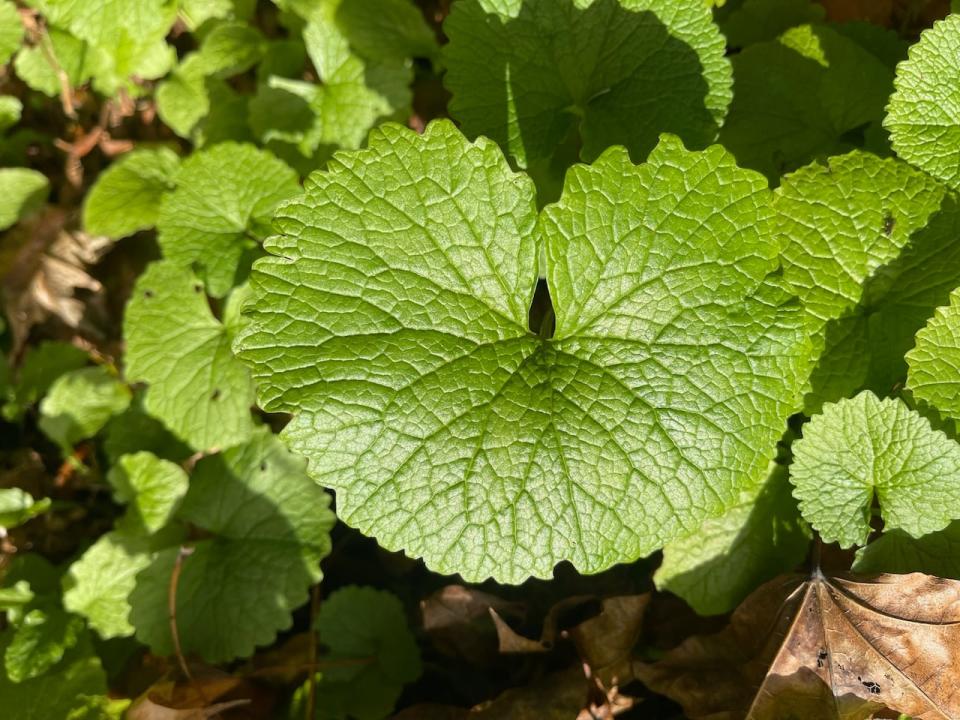How to get rid of invasive garlic mustard? Just eat it, forager says

A forager in eastern Ontario is recommending an unusual way of dealing with invasive plants: eating them.
Tauney Stinson lives in Renfrew County, and says invasive plants are actually quite tasty. She's the owner of Forager Bee, which provides outdoor education and teaches people to forage for their own food.
Right now she has her eye on garlic mustard, a plant identified as one of the top threats on Ontario's list of invasive terrestrial plants.
In working to eradicate invasive species, she says we can also find some tasty snacks.
One of the first plants to sprout in spring, garlic mustard in its infancy looks like low-lying ruffled leaves. After its first year, the rosettes shoot up and lighten to a pale green, and tiny white flowers dot the top of the plant.
"When you go to mow your lawn for the first time, you will probably get an intense garlicky smell," Stinson told CBC's Ottawa Morning on Friday.
The 'tree killer'
"Invasive species are defined as harmful alien species whose introduction or spread threatens the environment, the economy, or society, including human health," according to Ontario's invasive species strategic plan.
These plants are often brought over from other countries — intentionally or by accident — and take up residence where they don't belong, potentially harming native species.
Garlic mustard was brought to North America from Europe in the 1800s as an edible herb, but now the province says it has real potential to harm native plants such as trilliums, wood poppies and trout lilies.

Seeds from the garlic mustard plant can live for up to 30 years, according to the province. (Green Thumb Photography)
It does this by releasing what's called an allelopathic toxin, a plant toxin that kills soil fungi called mycorrhizae. Mycorrhizae protect against root diseases and help plants take in nutrients.
In addition to these toxins, the density of garlic mustard can strangle native trees such as sugar maples and white ash. This quality has earned it the title of "tree killer," according to Tree Canada.
Weeds we can eat
Mustard garlic is poisonous to smaller animals such as rabbits and goats. However, it is harmless to humans, who can eat the entire plant from roots to leaves. Stinson said the plant tastes best before it flowers, usually in April or May.
"It's kind of mustardy, kind of like arugula and also very garlicky," she said.
The plant is high in vitamins A and C. In spring, its roots can be ground into a horseradish substitute. The leaves can replace store-bought salad greens. Stems work in pesto or a stir fry.
As far as other tasty invasive species go, Stinson said Japanese knotweed is an excellent choice and should be ready to harvest in May. Its asparagus-like shoots can be used as a rhubarb substitute once it's cooked in water.
Ground elder is another replacement for salad greens or parsley. Dame's rocket, catnip, lamb's quarters and ground ivy are more options prevalent in eastern Ontario.
Eradicating garlic mustard requires a multi-pronged approach, Stinson said. Pulling the invasive plant from the ground can also help, but its seeds can survive for years.
To have a lasting impact, gardeners need to pull the plant for several consecutive growing seasons. Eating invasive plants is just one piece of the puzzle.
The province asks anyone who sees garlic mustard or other invasive species in the wild to report it to Ontario's invading species awareness program.

